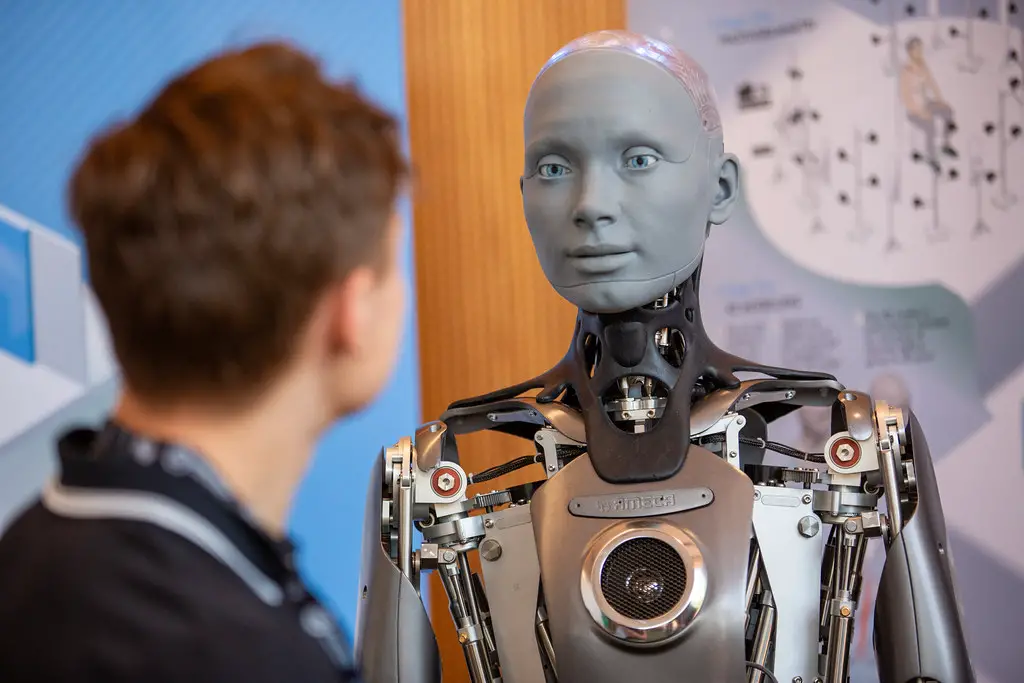
Artificial Intelligence 2023
Table of Contents
Introduction:
Artificial Intelligence (AI) is an advanced technology that involves the development of intelligent machines that can perform tasks that require human intelligence. AI has been evolving rapidly in recent years, and it has become an integral part of our lives. In this article, we will explore some real-life examples of AI and how it is changing the world.
Healthcare:

AI is transforming the healthcare industry in various ways. It is being used for the diagnosis of diseases, identifying patterns in medical images, predicting patient outcomes, and personalized treatment recommendations. One real-life example of AI in healthcare is the use of machine learning algorithms to analyze medical images, such as X-rays and MRIs. These algorithms can identify patterns and anomalies in the images, which can help doctors diagnose diseases accurately and quickly.
Another example is the use of AI-powered chatbots, which can provide patients with immediate responses to their queries. These chatbots are available 24/7 and can provide assistance to patients without the need for human intervention.
Finance:

AI is transforming the finance industry by automating processes and providing real-time insights into market trends. One real-life example of AI in finance is the use of robo-advisors. These are online investment platforms that use AI algorithms to create customized investment portfolios for investors. The algorithms analyze various data points, such as risk tolerance, investment goals, and market trends, to create a personalized investment plan for each investor.
Another example is the use of AI-powered chatbots in the finance industry. These chatbots can assist customers with banking services, such as balance inquiries, transaction history, and bill payments. The chatbots can provide instant responses to customers’ queries, which can save time and improve customer satisfaction.
Retail:

AI is transforming the retail industry by providing personalized shopping experiences, optimizing inventory management, and improving supply chain management. One real-life example of AI in retail is the use of recommendation engines. These engines use AI algorithms to analyze customer behavior and provide personalized product recommendations to each customer. The algorithms can analyze various data points, such as purchase history, search queries, and browsing behavior, to provide personalized recommendations to customers.
Another example is the use of AI-powered chatbots in the retail industry. These chatbots can assist customers with their shopping needs, such as product recommendations, order tracking, and returns. The chatbots can provide instant responses to customers’ queries, which can improve customer satisfaction and increase sales.
Transportation:

AI is transforming the transportation industry by providing real-time insights into traffic patterns, improving safety, and optimizing routes. One real-life example of AI in transportation is the use of self-driving cars. These cars use AI algorithms to navigate roads and make decisions in real-time. The algorithms analyze various data points, such as traffic patterns, weather conditions, and road signs, to make decisions about speed, direction, and other driving behaviors.
Another example is the use of AI-powered predictive maintenance. This technology uses AI algorithms to analyze data from sensors on vehicles and predict when maintenance is needed. This can help prevent breakdowns and reduce downtime, which can improve efficiency and reduce costs.
Education:

AI is transforming the education industry by providing personalized learning experiences, identifying areas of weakness, and improving student outcomes. One real-life example of AI in education is the use of adaptive learning software. This software uses AI algorithms to analyze student behavior and adjust the learning experience accordingly. The algorithms can analyze various data points, such as learning style, pace, and understanding, to provide personalized learning experiences to each student.
Another example is the use of AI-powered chatbots in education. These chatbots can assist students with their studies, such as answering questions, providing feedback, and offering suggestions for improvement. The chatbots can provide instant responses to students’ queries, which can improve learning outcomes and
reduce the workload of teachers.
Manufacturing:

AI is transforming the manufacturing industry by improving efficiency, reducing downtime, and enhancing product quality. One real-life example of AI in manufacturing is the use of predictive maintenance. This technology uses AI algorithms to analyze data from sensors on machinery and predict when maintenance is needed. This can help prevent breakdowns and reduce downtime, which can improve efficiency and reduce costs.
Another example is the use of AI-powered quality control. This technology uses AI algorithms to analyze product quality and identify defects. The algorithms can analyze various data points, such as size, shape, and texture, to identify defects and provide feedback to workers. This can help improve product quality and reduce waste.
Agriculture:

AI is transforming the agriculture industry by providing real-time insights into crop health, optimizing crop yields, and reducing waste. One real-life example of AI in agriculture is the use of precision farming. This technology uses AI algorithms to analyze various data points, such as soil moisture, weather conditions, and crop health, to optimize crop yields. The algorithms can provide real-time insights into crop health, which can help farmers make informed decisions about irrigation, fertilization, and other factors that affect crop growth.
Another example is the use of AI-powered drones in agriculture. These drones can be used to survey crops, analyze soil conditions, and identify areas of weakness. The drones can provide real-time data, which can help farmers make informed decisions about planting, harvesting, and other activities.
Conclusion:
AI is transforming various industries and changing the way we live and work. From healthcare to agriculture, AI is providing real-time insights, improving efficiency, and enhancing productivity. As AI technology continues to evolve, it is likely that we will see more innovative applications in various industries, which can help us solve complex problems and improve our lives.




